Any athlete who I have worked with who has been successful, have all mastered the ability to control body movement whilst on the move, and changing direction at a high velocity. With this constantly at the forefront of my prescription of training programmes, I always emphasise training for movement, rather than training certain body parts.
Training for movement allows the athlete to improve functionally and more importantly, will transfer any improvements from my strength prescription to the competitive environment. Most of my exercise prescription for performance training will be ground based exercises, that involve the athlete standing on their feet producing force against the ground (squats, deadlifts, lunges, snatch, clean, power shrugs). The higher the force the athlete can apply to the ground means the higher they can jump, the faster they can run and change direction. It goes without saying that all these exercises involve barbells or dumbbells, as this will allow multiple planes of movement. This can involve left/right, up/down, forwards/backwards rotational or angular movements.
Most sporting actions require multi-joint movements as well as major joints – the ankle, knee and hip. These three joints when moved from the flexed to the extended position create the explosiveness needed to blast out of the starting blocks. This is what is needed to blast after an opponent, or leap up for a ball. Training multiple joint movements is far more effective for elite performance than training single joint-isolation movements.

It is also worth noting that single leg movements need to be implemented in programming prescription, as it is very rare in any sport that the athlete is on both legs at the same time. I have been quoted figures that during competition 70-80% of the athlete’s bodyweight are supported by a single leg during a running action. This would make exercises likes single leg squats, lunges, single leg deadlifts, and speed step ups vital in lower body development. Training on one leg would also promote and allow a higher degree of balance and stabilization to occur. The subject of stabilization is a very important factor when training the upper body. It is imperative that dumbbells are used to develop strength in this area, as they force the body to recruit more muscle fibres than a standard barbell. Unlike the dreaded resistance machines, dumbbells will cause the tendons and ligaments to strengthen at the same rate as the muscles being trained. An added bonus of using dumbbells is that you will get a certain amount of improvement in body proprioception, core strength and overall body balance which you will find hard to do on a exercise machine such as a leg press. A leg press only requires the athlete to lie on their back looking up at the ceiling!
The explosive power and strength element plays a large role in any training programme. It not only develops absolute strength, but it also can help in improving the cardiovascular abilities of the athlete. Using plyometric style training can develop explosive strength and power. Almost every sport imaginable involves jumping of some sort. This skill is developed with contrast or reactive type training. Some examples of reactive or contrast training include box jumps, band squats, depth jumps, single/double leg bounds, altitude jumps, ravers and load release jumps. These, among many other contrast or reactive exercises, can be selected to closely mimic what action the player does in a game.
via GIPHY
Box jumps are one of the simplest, cheapest and easiest of all the contrast methods of training to implement to any training programme. Box jumps are exactly what their name suggests. The athlete literally jumps up onto a box from the ground using both feet. If it is decided to introduce box jumps into a programme, here are a couple of general tips;
Start by doing basic jumps onto a normal bench/box.
Don’t do too many jumps per session/per week as this can lead to overuse injury. (A figure of 12 – 15 jumps per session is a general safe rule of thumb.)
I have found another simple exercise that can be implemented into most programmes is knee jumps. Again knee jumps are fairly self-explanatory. To execute the exercise quite simply kneel down on the floor with the hips relaxed. Swing back the arms to help create some momentum in assisting an explosion up off the floor. The hips should be pushed through as the athlete leaves the ground, to help go from a kneeling to a standing position. When the basic knee jump has been mastered, the athlete can progress to repeating the exercise with a bar placed on the back of the shoulders. Not only does the extra weight add to the difficulty, but the elimination of the arm drive means the more power and momentum must be produced by the lower body.
The two exercises mentioned above, and in fact all jumping exercises, produce the fastest rate of explosive strength. I have always found that explosive strength is best developed by using moderate resistance (a rough figure of around 40% of 1 rep max) with maximum speed. This dynamic method of training is often misunderstood, as athletes and coaches feel unless the athlete is shifting big weights they are not improving for performance.




